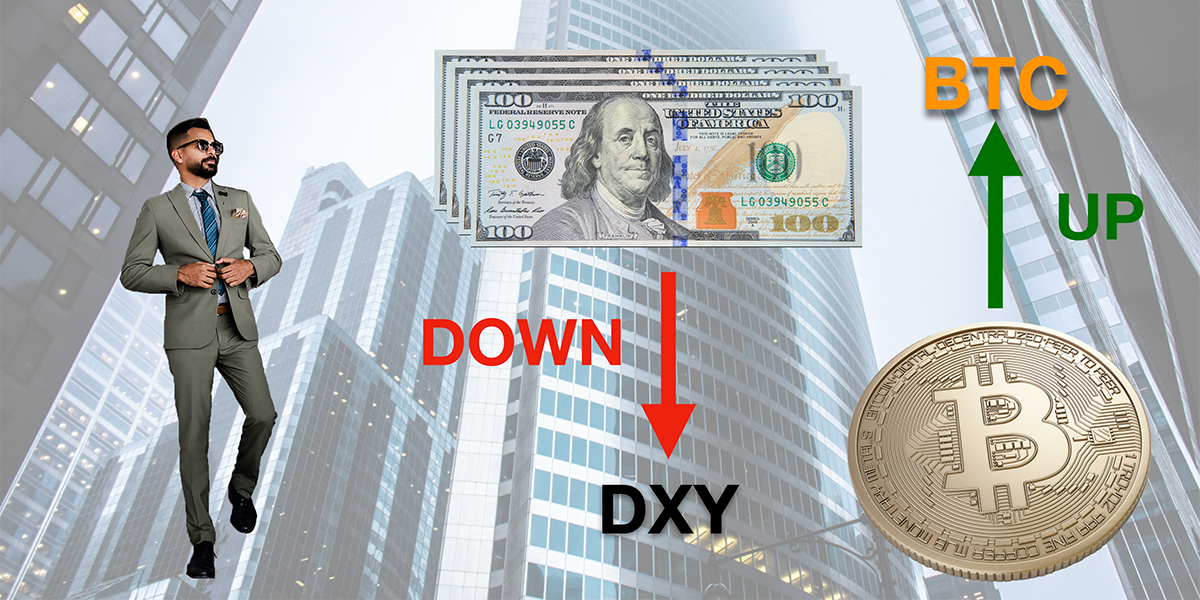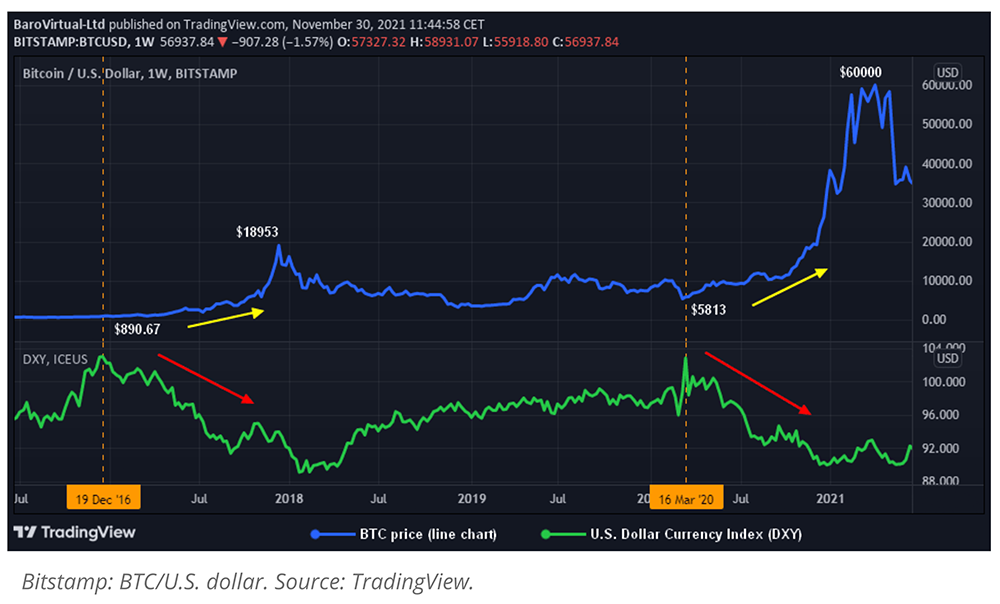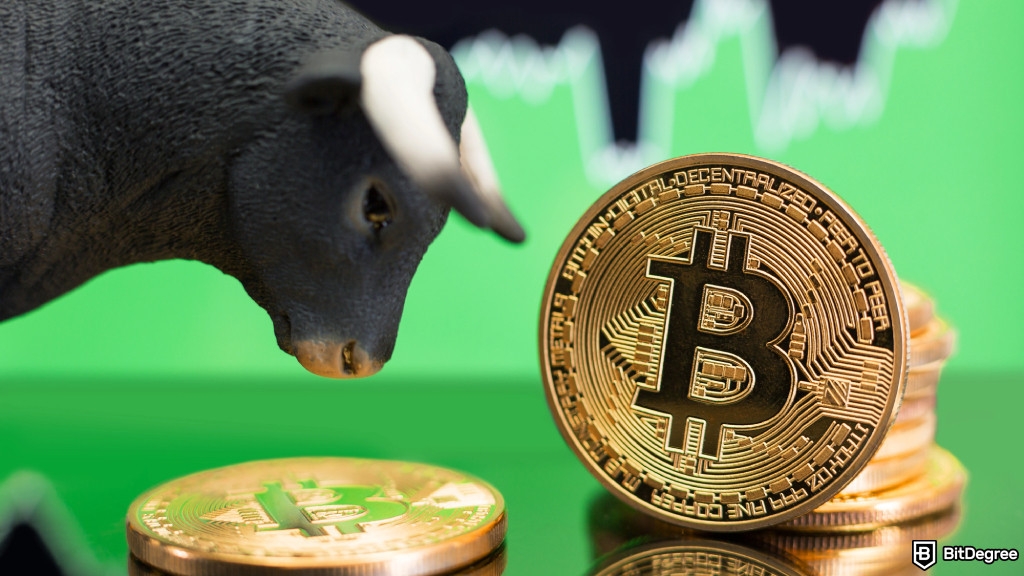
The DXY is the US Dollar (USD) strength index versus a bucket of other fiat currencies. It is an indicator of how the USD is performing compared to other currencies like the Euro (EUR), Yen (JPY), Pound (GBP), Canadian Dollar (CAD), Krona (SEK), and Swiss Franc (CHF). In the first quarter and the start of the second quarter of 2022, the DXY shows the strength of the USD increasing against all other currencies. That also includes the top cryptocurrency Bitcoin (BTC).

The growing strength of the USD is a macroeconomic indicator of how the global economy is performing. It is not a very stable year for economic growth due to the conflict in Ukraine, global supply chain issues (as a result of Covid-19), and a rise in inflation rates. The USD is relatively stronger because the other currencies are in a weaker position. Japan has not increased its interest rates, while the European currencies are affected by the conflict next door that is affecting energy and imports coming from Ukraine and Russia.
One thing we need to understand is that Bitcoin, like other commodities, is priced in USD. In order to hold BTC, it must be purchased using USD. When the USD is stronger, the demand would be for more USD because of the returns to investors. They will liquidate assets for gains during an economic downturn. That is why there are lots of liquidations of stocks, and also, cryptocurrencies including BTC. During a strong economy, however, investors buy up assets. This shows that there is more when it comes to the relationship between the USD and BTC.
There is an inverse correlation of Bitcoin prices going down while the USD is becoming stronger based on our observation. Tech stocks have been dumping in the US due to the Feds increasing interest rates starting in March 2022 by 25 bps. Unfortunately, this has also affected the cryptocurrency market. Investors have treated Bitcoin and other digital currencies like tech stocks in relation to the rise in interest rates. This leads to the question, If BItcoin has been touted as a new asset class, then why is it dumping along with the rest of the traditional financial market?

This correlation shows that while Bitcoin is supposed to be a safe haven or hedge asset to the traditional financial market (i.e. S&P 500 and Nasdaq 100), it is actually more in tandem with the current swings in market volatility. The rest of the cryptocurrency market follows what happens to Bitcoin, so we are seeing even more volatility in an already volatile market. This correlation is increasing even more fear due to the risks involved.

It appears that it is not Bitcoin itself that is causing this to happen. It is the investors who are quite unsure of Bitcoin during an economic crisis since it has not been around that long. Investors will need to liquidate assets, that includes BTC and other cryptocurrency, since the higher interest rates lead to more expensive cost of capital. If an investor borrowed at near 0% interest rates on capital, without a fixed term or agreement, things will suddenly become more expensive to pay off when the rates are increased. In order to pay off debt or prevent higher costs, some assets will need to be liquidated.
Rising interest rates increase the cost of borrowing money for businesses. For consumers it makes purchasing goods more expensive. It can affect mortgage rates for home buyers, and companies that need to grow will have to pay more for capital. The economy begins to slow down, and this can lead to a recession. This can also affect Bitcoin, but there is some good findings based on on-chain analytics that it is not all that bad compared to other cryptocurrencies.
Bitcoin has been able to hold its key support between $32K-$39K at the beginning of 2022. While most cryptocurrencies have taken a larger fall, Bitcoin has remained quite stable. Its lowest point was at $35,030.25 (1/22) while peaking at $47,686.81 (1/1) (data from CMC). It touched $47,465.73 closing price (3/29) before going on another downtrend as BTC dropped below its 50-day MA. Since falling from its ATH of $68,789.63 (11/10/21), it has yet to recover being down close to 45% (as of this posting) of the ATH.
The on-chain analytics for BTC shows another story. During this time, there has been a massive accumulation of BTC. Microstrategy and new market player Terra have continued to purchase BTC. While this leads to short rallies, it is also a sign of BTC supply moving off of exchanges and reaching a new high. This has increased the illiquid supply of Bitcoin to 75% as of the first quarter of 2022. There are more people willing to hold BTC rather than selling it. If there were more sellers, we would have seen a larger flow of BTC into exchanges and a significant fall in the illiquid supply. While there is a movement of BTC into exchanges for selling, so far, it has not reached panic levels due to the economic uncertainties ahead.

It is speculation that with more investors holding Bitcoin, its price will eventually go up. That can be expected so long as the illiquid supply remains higher and the demand for the digital asset increases. At the end of the first quarter of 2022, the demand for USD was higher than BTC, given the current economic indicators.
If Bitcoin can decouple from the stock market, it can become the type of asset proponents expect it to be. A safe haven asset during economic downturns and even a hedge against inflation. The problem is the mindset of investors in treating BTC like a tech stock, which shows a significant or strong correlation to traditional markets. It is counterintuitive to the purpose of Bitcoin as a new asset class. Thus, when DXY is strong, BTC is weak. Perhaps if there were no economic woes, a stronger dollar would actually favor inflows into Bitcoin. We did see how incessant money printing that started in 2020 also saw an increase in Bitcoin’s price, as the DXY started to grow stronger.
There is no definitive proof that USD based on the DXY and BTC are absolutely inversely correlated. A stronger USD can also lead to more inflows into BTC, as we saw during the start of the Fed money printing in 2020. This is just the observation we are seeing and has been reported on in the past. The economic indicators have not been favorable to what is happening in all markets. It favors the USD because of its global strength against other currencies (in early 2022), and it is also the world’s reserve currency in trade. Bitcoin maximalists are expecting to see what they hope BTC should be doing during a financial crisis. It just so happens that not all investors have the same vision yet when it comes to Bitcoin as an asset. So far, it has not been the case with a strong USD and investor behavior when it comes to Bitcoin.
Disclaimer: This is not financial advice. The information provided is for reference and educational purposes only. Please DYOR to verify information.







